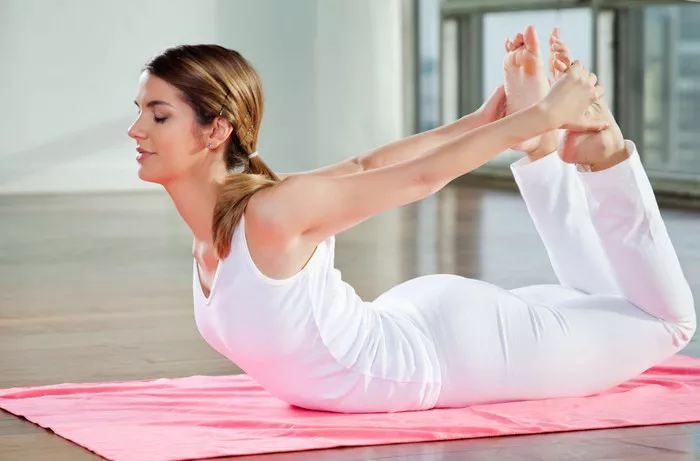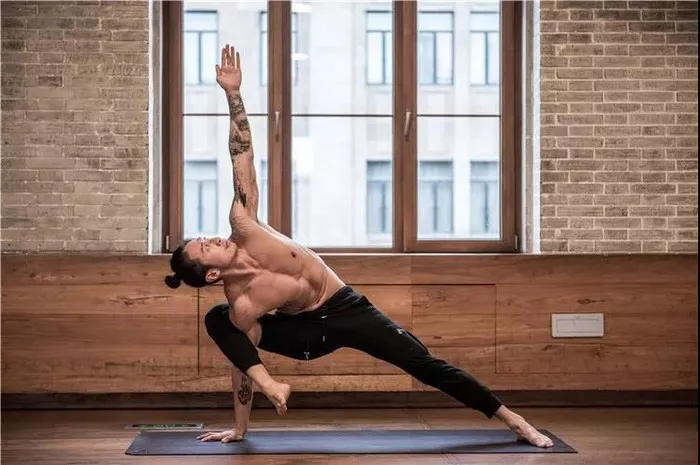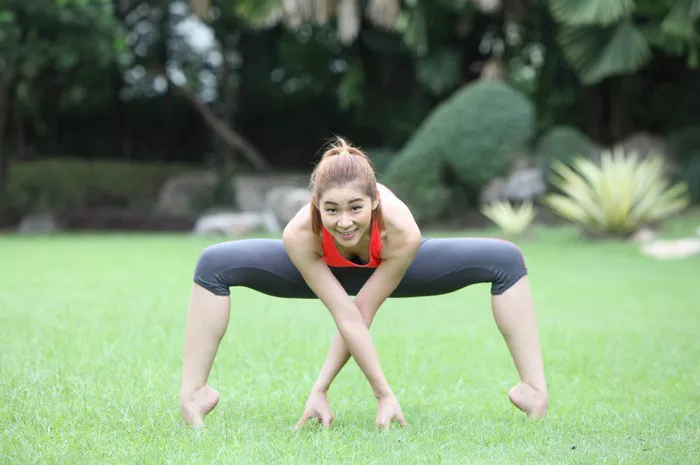Yoga is a holistic practice that brings physical, mental, and emotional benefits, and over time, many different styles of yoga have evolved, each emphasizing various aspects of the practice. Two popular forms of yoga, Baptiste Yoga and Bikram Yoga, have gained significant attention due to their unique approaches, intense practices, and widespread appeal. While both are rooted in the tradition of Hatha Yoga, they are distinct in their philosophies, practices, and environments. This article will delve into the key differences between Baptiste Yoga and Bikram Yoga, including their origins, class structure, benefits, and potential challenges.
1. The Origins of Baptiste and Bikram Yoga
Baptiste Yoga: Origins and Development
Baptiste Yoga is a modern form of yoga developed by Baron Baptiste, an American yoga teacher, in the late 20th century. Baptiste, who was heavily influenced by traditional Hatha Yoga, began his practice in the early 1980s. After studying various styles of yoga, including Ashtanga and Iyengar Yoga, as well as undergoing extensive personal training and learning from different teachers worldwide, Baptiste sought to create a style that integrated physical intensity, mindfulness, and personal empowerment.
His aim was to create a practice that was accessible to all levels of practitioners while maintaining a sense of depth and challenge. Baptiste Yoga incorporates flowing sequences of poses, breathing techniques, and elements of strength-building. It focuses on creating an open, judgment-free environment, and its philosophy encourages personal transformation through self-awareness and mindfulness.
Baptiste Yoga classes are typically led with a spirit of encouragement, fostering a sense of community where students feel supported on their individual journeys. The practice itself is designed to build physical strength, mental clarity, and emotional resilience, with an emphasis on mindfulness both on and off the mat.
Bikram Yoga: Origins and Development
Bikram Yoga, on the other hand, was developed by Bikram Choudhury in the 1970s. Choudhury, an Indian yoga teacher, was trained in the traditional styles of yoga under the guidance of his guru, Bishnu Ghosh. Bikram Yoga, as a system, was created with the intent of providing a standardized and consistent yoga experience that could be replicated worldwide. It is known for its set sequence of 26 postures (asanas) and two breathing exercises, all performed in a room heated to around 105°F (40.6°C) with high humidity.
Bikram Choudhury first introduced Bikram Yoga in the United States in 1971. He marketed it as a way to improve physical health and treat a variety of ailments. Over time, it gained widespread popularity and was embraced by yoga practitioners looking for a challenging, rigorous workout. The heated environment of Bikram Yoga is thought to aid in detoxification and flexibility by promoting sweating and encouraging the body to stretch more deeply.
While Bikram Yoga has faced some controversy, especially surrounding its founder, it remains a significant force in the global yoga community. Its distinctive sequence and heated environment have set it apart from many other styles of yoga.
2. The Class Structure: What to Expect
Baptiste Yoga Class Structure
Baptiste Yoga classes tend to be dynamic, flowing sequences that encourage both strength and flexibility. A typical class follows a vinyasa-style flow, meaning the poses are linked together through breath and movement. Baptiste Yoga draws inspiration from various yoga styles, including Ashtanga, Vinyasa, and Iyengar, but with a focus on making the practice accessible and adaptable to students of different levels.
In a typical Baptiste Yoga class, you can expect:
Vinyasa Flow: A continuous flow of poses, moving from one to the next with an emphasis on linking breath with movement.
Physical Intensity: The practice is designed to be physically demanding, aiming to challenge the body while cultivating mindfulness and awareness.
Breathing Techniques: Breath awareness and specific breathing exercises (pranayama) are often integrated to help regulate energy and focus the mind.
Mindfulness and Personal Growth: The practice encourages emotional awareness, self-reflection, and mindfulness, both during the session and in daily life.
Adaptability: The class is designed to accommodate students of all skill levels, with modifications offered for beginners and more advanced options for experienced practitioners.
Baptiste Yoga classes are typically taught in a warm room, though they are not necessarily heated to the extreme temperatures associated with Bikram Yoga. The classes usually last around 60 to 90 minutes.
Bikram Yoga Class Structure
In contrast, Bikram Yoga follows a strict, set sequence of 26 poses and two breathing exercises, performed in a heated room. The class structure is highly standardized, ensuring that no matter where you practice Bikram Yoga, you will experience the same sequence and flow.
A typical Bikram Yoga class includes:
Set Sequence of Poses: Bikram Yoga classes are characterized by 26 specific asanas (yoga postures) and two breathing exercises. These postures are designed to work the entire body, emphasizing strength, flexibility, and balance.
Heated Environment: Classes are held in a room heated to approximately 105°F (40.6°C), with 40% humidity. This temperature is intended to promote detoxification through sweating and increase flexibility by warming the muscles.
Two Breathing Exercises: The class begins and ends with the “pranayama” breathing exercises, which are designed to improve lung capacity and help with mental focus and relaxation.
Duration: Bikram Yoga classes are usually 90 minutes in length, with each class following the same structure and flow.
Instructor Script: Bikram Yoga instructors typically use a scripted dialogue to guide students through the sequence. The instructions are precise and consistent across all classes, ensuring uniformity in the experience.
Unlike Baptiste Yoga, Bikram Yoga classes focus less on modifying poses for individual needs and more on following a specific format. This structure appeals to students who prefer a consistent and disciplined approach to their practice.
3. The Environment: Heated vs. Warm Rooms
Baptiste Yoga: The Environment
While Baptiste Yoga classes are often practiced in warm rooms, they are not as intensely heated as Bikram Yoga. The warmth in Baptiste classes is generally intended to help loosen the muscles and facilitate deeper stretching. The temperature can vary depending on the studio but is typically around 80-85°F (26-29°C).
The atmosphere in Baptiste Yoga is designed to be welcoming and supportive. Classes often have a community-oriented feel, with an emphasis on creating a non-judgmental, empowering space for personal growth. The environment fosters a sense of relaxation and mindfulness, with instructors offering encouragement and guidance throughout the practice.
Bikram Yoga: The Heated Environment
In contrast, Bikram Yoga is always practiced in a room that is specifically heated to 105°F (40.6°C) with high humidity. This intense heat is one of the most distinguishing features of Bikram Yoga. The heated room is believed to help increase flexibility, promote detoxification, and prevent injuries by allowing muscles to stretch more deeply.
The hot room can be overwhelming for some practitioners, especially beginners, but it is a fundamental aspect of the Bikram Yoga experience. The heat also encourages heavy sweating, which is thought to flush toxins from the body and improve skin health. However, the heat can be a challenge for some students, particularly those who are new to hot yoga or have health conditions that make intense heat difficult to tolerate.
4. Health Benefits: Baptiste vs Bikram
Health Benefits of Baptiste Yoga
Baptiste Yoga offers a wide range of physical and mental benefits. Its emphasis on strength-building, flexibility, and mindfulness can help practitioners achieve overall well-being. Some of the key benefits of Baptiste Yoga include:
Improved Flexibility: Regular practice can help increase flexibility, particularly in the hips, shoulders, and spine.
Increased Strength: The dynamic flow of poses helps build strength in both the upper and lower body, including the core.
Enhanced Mental Clarity: Through mindfulness and breath control, Baptiste Yoga promotes mental focus, emotional resilience, and self-awareness.
Weight Loss and Toning: The physical intensity of the practice can help burn calories, promote weight loss, and tone muscles.
Stress Relief: The practice encourages relaxation and stress reduction, helping to improve overall emotional well-being.
Health Benefits of Bikram Yoga
Bikram Yoga, due to its heated environment and specific sequence of postures, offers several unique benefits. The intense heat can enhance the effects of the practice, although it may also present challenges for some practitioners. Some benefits of Bikram Yoga include:
Detoxification: Sweating in the heated room is believed to help expel toxins from the body, improving overall health and vitality.
Improved Flexibility: The heat promotes greater flexibility, allowing practitioners to stretch deeper and potentially reduce muscle stiffness.
Enhanced Strength and Endurance: The series of 26 postures builds strength in the body, particularly in the core, legs, and upper body.
Improved Cardiovascular Health: The high heat can elevate the heart rate, providing a cardiovascular workout in addition to strength and flexibility.
Mental Focus: The set sequence of poses requires concentration and mindfulness, helping to develop mental clarity and focus.
While both Baptiste and Bikram Yoga offer significant physical and mental benefits, Bikram Yoga’s heated environment is a distinguishing factor that brings its own set of advantages and challenges.
5. Potential Drawbacks and Considerations
Baptiste Yoga: Challenges and Considerations
While Baptiste Yoga is generally considered accessible and adaptable, there are some challenges that practitioners might encounter:
Intensity: The practice can be physically demanding, which may be overwhelming for beginners or those with certain health conditions.
Lack of Uniformity: Unlike Bikram Yoga, which has a consistent sequence, Baptiste Yoga classes may vary from teacher to teacher, which can be challenging for those who prefer structure and predictability.
Physical Limitations: Some of the more advanced postures may not be suitable for individuals with specific injuries or physical limitations. Modifications are available, but it may take time to build up to the full expression of each pose.
Bikram Yoga: Challenges and Considerations
Bikram Yoga presents unique challenges due to the heated environment and strict class format:
Heat Intensity: The high heat in Bikram Yoga can be uncomfortable, especially for beginners or individuals who are not accustomed to hot environments. Overheating and dehydration are common risks if the proper precautions are not taken.
Rigidity of the Sequence: Some practitioners may find the strict structure of Bikram Yoga limiting, as the same sequence is practiced in every class.
Potential Health Risks: Due to the intensity of the practice and the high heat, there is an increased risk of dehydration, heat exhaustion, or even heatstroke if precautions are not taken.
Conclusion
Both Baptiste Yoga and Bikram Yoga offer unique approaches to the practice of yoga, each with its own set of benefits and challenges. Baptiste Yoga is well-suited for individuals looking for a dynamic, flowing practice that emphasizes strength, flexibility, and mindfulness. Its adaptability and community focus make it a good option for beginners and seasoned practitioners alike.
On the other hand, Bikram Yoga is ideal for those seeking a more structured, intense practice that incorporates a heated environment for added benefits such as detoxification and increased flexibility. However, the heat and rigid sequence may be difficult for some practitioners to handle.
Ultimately, the best choice depends on your personal preferences, fitness goals, and how your body responds to heat and intensity. Whether you choose Baptiste or Bikram Yoga, both forms of yoga offer powerful tools for physical health, mental clarity, and personal transformation.
Related Topics:

























